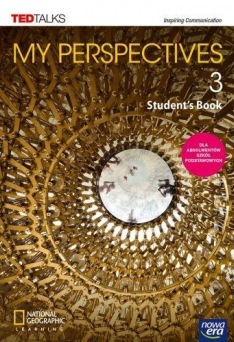II liceum
Język angielski
Lista zadań Strona 139
Strona 139
- Strona 4
- Strona 5
- Strona 6
- Strona 7
- Strona 8
- Strona 9
- Strona 10
- Strona 11
- Strona 13
- Strona 14
- Strona 15
- Strona 16
- Strona 17
- Strona 18
- Strona 19
- Strona 20
- Strona 21
- Strona 22
- Strona 23
- Strona 25
- Strona 27
- Strona 29
- Strona 30
- Strona 31
- Strona 32
- Strona 34
- Strona 35
- Strona 36
- Strona 37
- Strona 38
- Strona 39
- Strona 40
- Strona 41
- Strona 43
- Strona 45
- Strona 47
- Strona 48
- Strona 49
- Strona 50
- Strona 51
- Strona 52
- Strona 53
- Strona 54
- Strona 55
- Strona 56
- Strona 57
- Strona 59
- Strona 61
- Strona 63
- Strona 64
- Strona 65
- Strona 66
- Strona 68
- Strona 69
- Strona 70
- Strona 71
- Strona 72
- Strona 73
- Strona 74
- Strona 75
- Strona 77
- Strona 79
- Strona 81
- Strona 82
- Strona 83
- Strona 84
- Strona 86
- Strona 87
- Strona 88
- Strona 89
- Strona 90
- Strona 91
- Strona 93
- Strona 95
- Strona 97
- Strona 98
- Strona 99
- Strona 100
- Strona 102
- Strona 103
- Strona 104
- Strona 105
- Strona 106
- Strona 107
- Strona 108
- Strona 109
- Strona 111
- Strona 113
- Strona 115
- Strona 116
- Strona 117
- Strona 118
- Strona 119
- Strona 120
- Strona 121
- Strona 122
- Strona 123
- Strona 124
- Strona 125
- Strona 127
- Strona 129
- Strona 131
- Strona 132
- Strona 133
- Strona 134
- Strona 135
- Strona 136
- Strona 137
- Strona 138
- Strona 140
- Strona 141
- Strona 142
- Strona 143
- Strona 145
- Strona 147
- Strona 148
- Strona 149
6
Listen to part 2 of the talk. Choose the correct option to complete each sentence. TED 8.21 Friends of the High Line thought the project would cost $100/$150 million to build.2 They estimated that over a 20-year period the High Line would generate $200/$250 million.3 The High Line will generate half a billion / billion dollars for the city in tax revenues.
7
Listen to part 3 of the talk. Are the sentences true (T) or false (F)? TED 8.31 Twice as many people as expected used the High Line last year.2 Architects have taken inspiration from the High Line. 3 Some parts of the High Line have been elevated to a higher level.4 Robert Hammond admits that he doesn't really love the design.5 He believes the space encourages people to behave in ways they wouldn't normally.
8
Listen to the sentences from the TED Talk. Check if you know the meaning of the words and phrases in the box. run overrelicassumedengagementfigure out behind
9
Work in pairs. Discuss the questions.1 What different ways of reducing the number of people who get run over can you think of?2 What problems might arise if ancient relics are found in a construction area?3 Who do you usually talk to if you need to figure out what to do about a problem? Why?4 Which of the ideas do you think your town/city would really get behind? Why?Free art gallery and museum entrance foreveryoneSpending more money on public artOfficial areas for young people to put up street art Free art materials for all schoolchildren.Displaying work by local poets on public transport.
10
Work in pairs. Discuss the questions.1 Where you live, are there any old buildings, industrial places or pieces of land that are no longer used? Do you know when or why they stopped being used?2 Do you know any old buildings or places that used to be used for one purpose but are now used for a different purpose? Have the changes been for the better or the worse?3 What's your favourite public space? Why? How often do you go there? What for?
